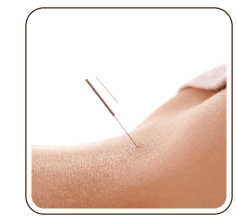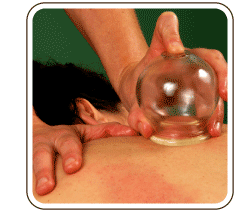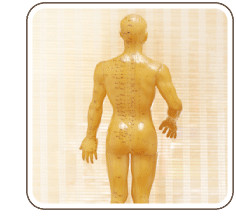|
Acupuncture can help with a long list of both conditions and symptoms as well as provide preventive and ongoing care. Below is a partial list of just some items that acupuncture can help to treat:
The first acupuncture session lasts one and a half to two hours. It begins with
Some patients feel a slight pinch at the initial insertion of the acupuncture needle. This fades very quickly and gives rise to the unique sensations felt during acupuncture. Some patients are not aware that the needle has been inserted at all. Most patients are able to relax or nap during treatments.
Yes, acupuncture has benefited many people that are undergoing chemotherapy. While chemotherapy attacks cancer cells, it also interferes with the normal functions of the body. Acupuncture and tui na (acupressure) can benefit those patients experiencing:
The quantity and course of acupuncture treatments is dependent upon the particular condition being treated, the length of time you have had the condition and the severity of the condition. You can expect to have a minimum course of 6-8 weekly acupuncture treatments during which you are encouraged to be active in asking questions about your progress. For a fluid unfolding of your healing process, you are encouraged to abide by any recommended lifestyle changes or implementations.
Chinese medicine is the umbrella term used to describe all of the therapies used in this Asian form of health care. These therapies include:
Chinese medicine is fundamentally a preventative form of healthcare whose diagnostic methods can detect both disease and the momentum towards a disease that has not yet presented itself. It is the study of the relationships between the external environment and internal environment. This is a reference to the notion of balance within the body and between the body and what exists outside the body. For example, an individual with low energy and low immunity may be less apt to fight off infections. A person with a hardier constitution will likely fight off infections much more quickly. Assessments and treatment protocols consider these aspects and work to treat the patient both externally and internally.
In order to understand how acupuncture works, we must first understand the basic concept of qi. Acupuncture works by regulating qi (chi) along the meridians, energetic pathways that carry qi, and at areas of blockage or shortage of qi.
Some insurance companies cover acupuncture. You will need to contact your insurance company for this information as plans differ regarding which ailments and treatment methods will be covered. You may also be able to receive coverage when your MD provides a prescription for acupuncture treatments.
No, Chinese medicine is one of the most widely used forms of traditional healing modalities used in the world and the scientific data on it's usefulness only continues to grow. Acupuncture was introduced to the United States in 1972 when the Nixon administration sent researchers to explore China’s culture. This time-tested therapy has just begun to plant it’s feet in U.S. culture and has been receiving more and more attention as years pass due to its efficacy with many different health issues. Scientific studies are slowly uncovering the uses of acupuncture. Many studies are being conducted worldwide that are establishing acupuncture efficacy. |



 an in-depth interview and assessment including the palpation of the radial pulses and viewing of the tongue. Acupuncture is administered after the interview during the first session and may include: heat therapy, tui-na (Chinese massage), and herbal recommendations. Subsequent sessions last one hour and may also include the therapies mentioned above.
an in-depth interview and assessment including the palpation of the radial pulses and viewing of the tongue. Acupuncture is administered after the interview during the first session and may include: heat therapy, tui-na (Chinese massage), and herbal recommendations. Subsequent sessions last one hour and may also include the therapies mentioned above.
 Qi (chi) is known as the energy that flows in the body, in and out of organs and tissues, and between the body and the external environment. When qi is flowing smoothly we are in a state of health. When qi is out of flux there is illness or pain.
Qi (chi) is known as the energy that flows in the body, in and out of organs and tissues, and between the body and the external environment. When qi is flowing smoothly we are in a state of health. When qi is out of flux there is illness or pain.